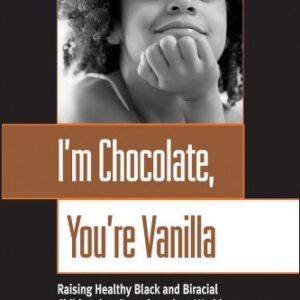Stepping Inside of Transracial Adoption
by Beth Hall
Children deserve to experience belonging, no matter how many families they have, whether they join their family, by birth or by adoption, no matter their age, no matter their race or how weird or boring or amazing they are, they deserve to come to believe in an absolute way that they have a rightful place in their home. Family provides the base.
I grew up in a family built by adoption – our parents adopted my sister; I was born to them. Two of our three closest cousins were also adopted into the family. I grew up with and continue to hear statements from adoptive parents about loving adopted children the “same” or “as much as” born-to children and it brings up a great many emotions for me as I remember our childhood. I know now that those statements are intended to reassure children, most especially those that are adopted. What I also know is that these statements were never useful to us as kids and sometimes they were downright offensive.
Often these words triggered great anger among us and a sense of being misunderstood. I remember conversations with my sister when she talked about feeling invisible to my parents because they refused to see how things were different for her. For myself, I felt a great sense of shame and guilt, as if I was somehow responsible for the differences that I could see hurt my sister but were never acknowledged in the confines of the family as a whole.
Let me make clear, we were both loved. We were in a family that talked positively about adoption. But our experience told us that we were different from each other and our parents’ need to emphasize the sameness of their love left us without room to be able to explore our feelings about these differences with them. Somehow it seemed as if by doing this we might be going against the basic tenet our parents were setting up as the “glue” or “meaning” of our family.
All of this took on an added meaning for me when my husband and I chose transracial adoption for our family. In some way, I think I was working out my own childhood frustration with not being able to speak the whole truth about our family for fear of being disloyal to my sister or my cousins whom I loved deeply. By adopting children who could never be mistaken as having been born to us, I felt a sense of relief that we would have to deal in the reality of difference that was sometimes missing in my family of origin.
In my best attempt to acknowledge my children’s experience, I co-wrote with Gail Steinberg the book “Transracial Adoption.” I felt compelled to write this book because I struggled to find books and or resources that were really concrete in talking about what it takes to parent across racial lines or how to help our children do more than survive this less than perfect solution to their less than fair birth circumstances. I wanted to explore how to support kids to thrive and blossom in a world that is often set up against them.
Responses Differ from Adoptees and Adoptive Parents
Reactions to our book have varied depending on the audience or group. It has been very gratifying to have many adults who were adopted from Korea or Vietnam as well as those adopted domestically across racial lines respond positively to what we wrote. Adoptive parents have been less uniform in their responses, some have been positive, others have registered resistance to our message that race matters.
White parents with Asian or Latino children, sometimes imagine that they and their children will be exempt from racial bias. Groups like Families with Children from China, which have done such a wonderful job of creating connections between adoptive families of children from the same ethnic background, appear to stop short of acknowledging their children’s similarities with others who are adopted transracially.
I’ve come to believe it is a mistake to limit such connections for our children. The more we can help our children find similarities with others whose adoption stories or racial groups are different than theirs, the more opportunity we give them to have rich resources from which they can tease out their own peace in the context of their adoption/racial identity. I am saddened when parents try to separate their children based on race or country of origin or even regions within a particular country. Adopted people need a larger community of folks with whom they can find answers and share common ground. And, as parents, we benefit too from exposure to shared issues across adoption histories and experiences.
Transracial adoptive families rest on the capacity to love one another without the common markers of “sameness.” We don’t look alike; the world doesn’t treat us like other families; each member in our family comes with a different history. But when our children ask, “Who is on my side? “the answer should be “Your family members.” Wrapped together under a splendid quilt that holds us warm, holds us up and tucks us into our daily lives, we act like a tribe, because that’s what we need to be. Our children’s experience of adoption is not the same as ours. We must serve as allies for them. We must pool our resources because that’s what families do. Together, we can be greater than the sum of our parts. With absolute commitment to our children and the honesty to embrace the truth of becoming a family of color, love lasts forever.






